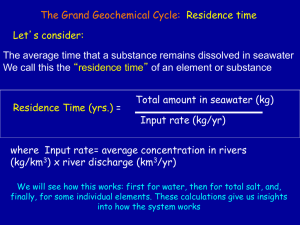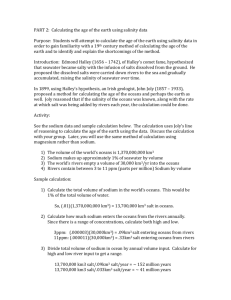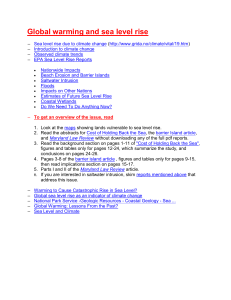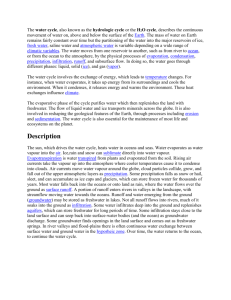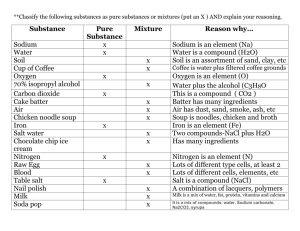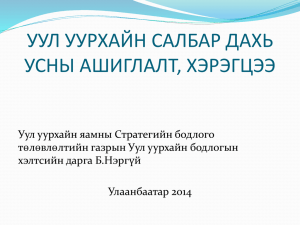Word - Your Planet Earth
advertisement
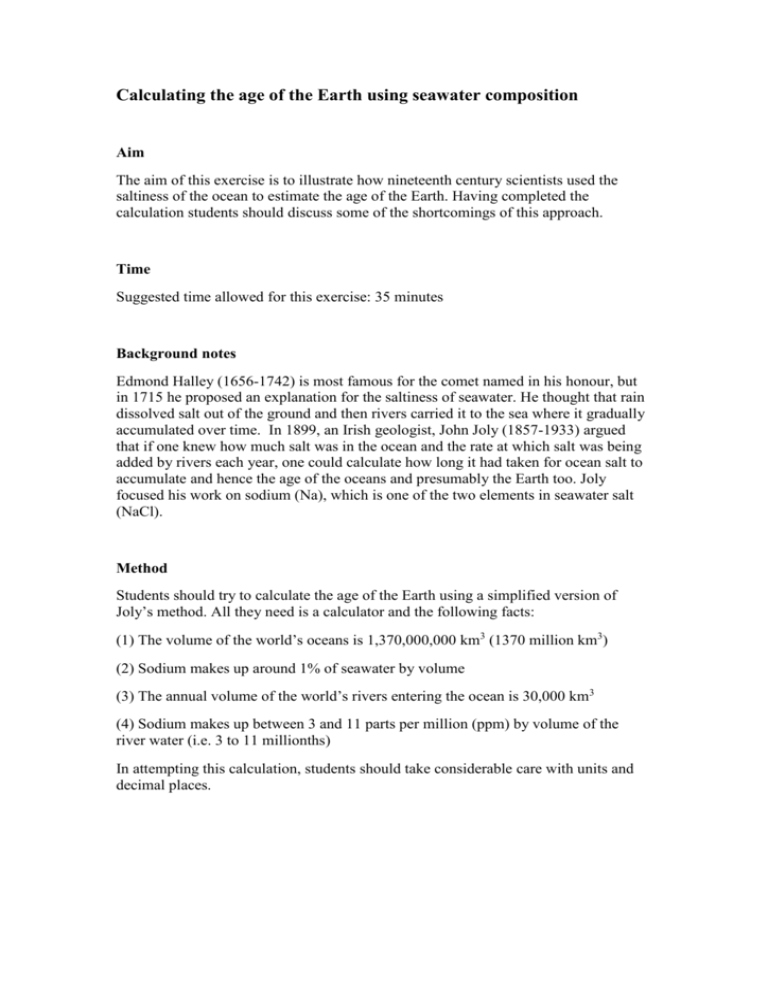
Calculating the age of the Earth using seawater composition Aim The aim of this exercise is to illustrate how nineteenth century scientists used the saltiness of the ocean to estimate the age of the Earth. Having completed the calculation students should discuss some of the shortcomings of this approach. Time Suggested time allowed for this exercise: 35 minutes Background notes Edmond Halley (1656-1742) is most famous for the comet named in his honour, but in 1715 he proposed an explanation for the saltiness of seawater. He thought that rain dissolved salt out of the ground and then rivers carried it to the sea where it gradually accumulated over time. In 1899, an Irish geologist, John Joly (1857-1933) argued that if one knew how much salt was in the ocean and the rate at which salt was being added by rivers each year, one could calculate how long it had taken for ocean salt to accumulate and hence the age of the oceans and presumably the Earth too. Joly focused his work on sodium (Na), which is one of the two elements in seawater salt (NaCl). Method Students should try to calculate the age of the Earth using a simplified version of Joly’s method. All they need is a calculator and the following facts: (1) The volume of the world’s oceans is 1,370,000,000 km3 (1370 million km3) (2) Sodium makes up around 1% of seawater by volume (3) The annual volume of the world’s rivers entering the ocean is 30,000 km3 (4) Sodium makes up between 3 and 11 parts per million (ppm) by volume of the river water (i.e. 3 to 11 millionths) In attempting this calculation, students should take considerable care with units and decimal places. Worked answer First, calculate the total volume of sodium in the all the world’s oceans. This is simply 1% of 1370 million km3, or 13,700,000 km3. Second, calculate how much sodium enters the oceans each year through river systems. Assuming a low sodium concentration (3 ppm), this is 0.09 km3 (i.e. 3 millionths of 30,000 km3) or for a high sodium concentration (11 ppm), this 0.33 km3 (i.e. 11 millonths of 30,000 km3). Third, work out the age of the Earth by dividing the total volume of sodium in the ocean (13.7 million km3) by either the low (0.09 km3) or high (0.33 km3) rate of annual input. Your answer will vary between 41 and 152 million years. Assumptions to discuss Although a laudable attempt to discover the age of the Earth, John Joly’s reasoning is based on several incorrect assumptions. The main one is that salt stays put once in the ocean. However, we now know that plate tectonics causes seawater to pass through the ocean crust, and as it does so, salt is removed from the water. Other losses of salt from the ocean occur through deposition of salt in sediments and its transfer onto land through sea spray. As the rate of loss balances the rate of input, the salt content of the world’s oceans is in a state of equilibrium (i.e. it is constant). All this means that Joly’s figure for the age of the Earth (up to 152 million years) is a great underestimate and is simply a measure of the ‘residence time’ of salt in the oceans. Another incorrect assumption made by Joly is that the present day rate of salt input into the oceans is constant. In fact it is likely to have been highly variable though geological time because as mountains are born, weathering rates change. John Joly (1857-1933), an Irish geologist who contributed to the nineteenth debate about the age of the Earth. He is perhaps better known as the man who pioneered the use of radiotherapy in the treatment of cancer. Joly, J. 1899. An estimate of the geological age of the earth. Scientific Transactions of the Royal Dublin Society, New Series, 7, 23-66. Photograph credit: Anon. 1934. John Joly. 18571933. Obituary Notices of Fellows of the Royal Society, 1, 259-28
